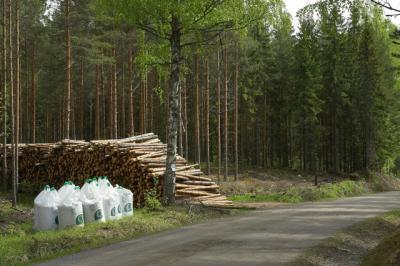The area of improvement of young stands decreased significantly in 2023
According to the statistics of Natural Resources Institute Finland (Luke), a total of EUR 272 million was allocated to silviculture and forest improvement in 2023. Although costs determined in euro increased, inflation reduced actual costs by three per cent compared to the last five years.
Of the total costs, EUR 214 million was used in silviculture. In forest improvement, the corresponding figure was EUR 58 million, of which almost EUR 30 million was allocated to the maintenance and construction of forest roads.
Improvement of young stands decreased
The area of early and later pre-commercial thinning and the improvement of young stands totalled 161,000 hectares, with total costs being roughly EUR 79 million. While the level of early and later pre-commercial thinning has remained stable in recent years, the improvement of young stands decreased by almost a third from the previous years. This can partly be explained by the increase of 22 per cent in the unit costs of the improvement of young stands in real terms.

Growth-enhancing fertilisation increased to its previous level
In 2023, forests were fertilised over a total area of roughly 71,000 hectares, of which remedial fertilisation accounted for almost a quarter and growth-enhancing fertilisation for the remaining part. Remedial fertilisation aims to adjust any imbalance in soil nutrients, which causes abnormal tree growth, for example. Growth-enhancing fertilisation seeks to boost tree growth.
“The volume of growth-enhancing fertilisation returned to its previous level, driven by the improved availability of fertilisers. The fertilisation volume increased by almost 2.5 times from 2022 and by 16 per cent compared to the average of the last five years. However, the 2021 figures were not quite reached,” says Tiina Mäkipää, Senior Statistician at Luke.
Fertilisation costs were slightly more than EUR 24 million. The amount of remedial fertilisation decreased by seven per cent from the last five years.
The role of spruce in planting decreased slightly
Spruce remained the most significant tree species in planting, even though the role of planted spruce seedlings is decreasing. The decreasing role of spruce may have been affected by the damage caused by the European spruce bark beetle, which has increased in recent years, and significant related news coverage.
“However, spruce remains the most commonly used tree species in planting. Regarding the total planting area, the spruce area fell to 63 per cent, whereas the pine area increased to 31 per cent, and the birch area to six per cent. The role of other tree species in planting remains low,” Mäkipää says.
The volume of artificial regeneration has remained fairly stable in recent years. In 2023, the artificial regeneration area was roughly 97,000 hectares, of which planting accounted for 77 per cent and seeding for the remaining part. The total costs of artificial regeneration were EUR 57 million, 13 per cent below the previous years’ average in real terms.
Weather conditions favoured prescribed burning
The summer of 2023 was ideal for prescribed burning, with the prescribed burning area increasing to almost 1,500 hectares. A similar peak in prescribed burning was last seen in the summer of 2020.
“Next year we will see how the new Metka subsidy encourages forest owners to undertake prescribed burning, which will be introduced as a new supported work type. Until now, prescribed burning has mostly been carried out in state-owned forests”, Mäkipää says.
Introduced this year, the amount of support is based on the size of the area subject to prescribed burning, with the minimum size being two hectares.
Information about the statistics
Luke’s statistics on silviculture and forest improvement include work carried out in private, forest-industry-owned, and state-owned forests. Data on felling areas are based on information generated by the Finnish Forest Centre based on forest use notifications.
Costs are recorded in the statistics at fair prices valid at each specific time. However, cost changes are examined in the texts in real terms by eliminating the change in value using the cost-of-living index (1951:10=100).




